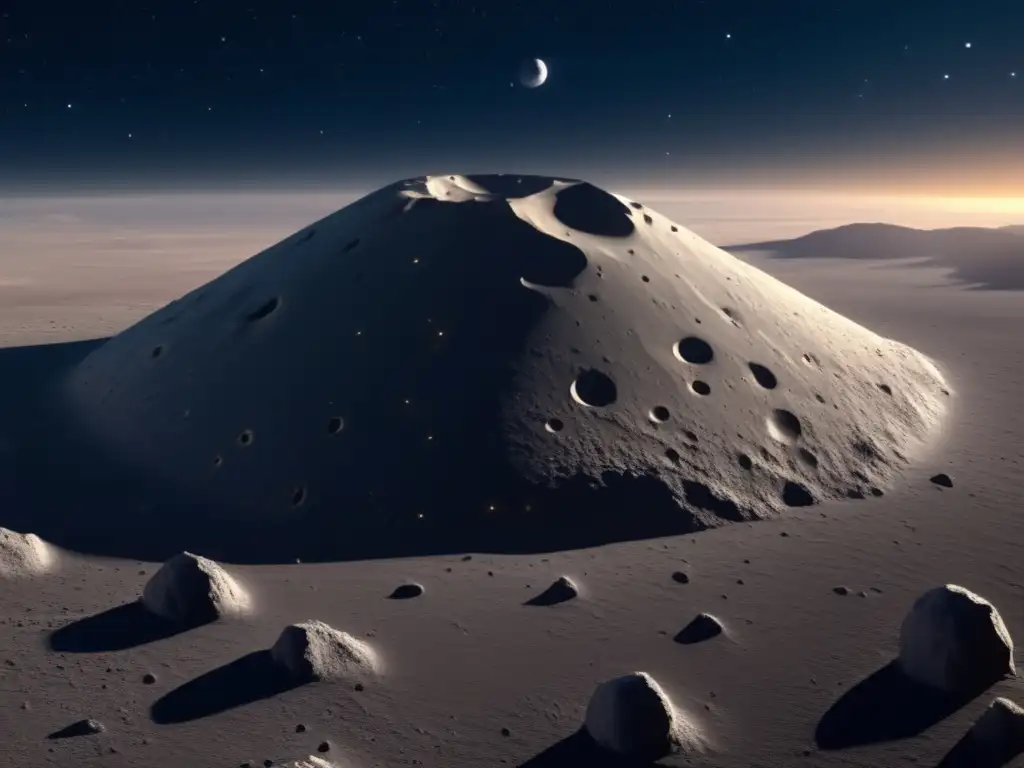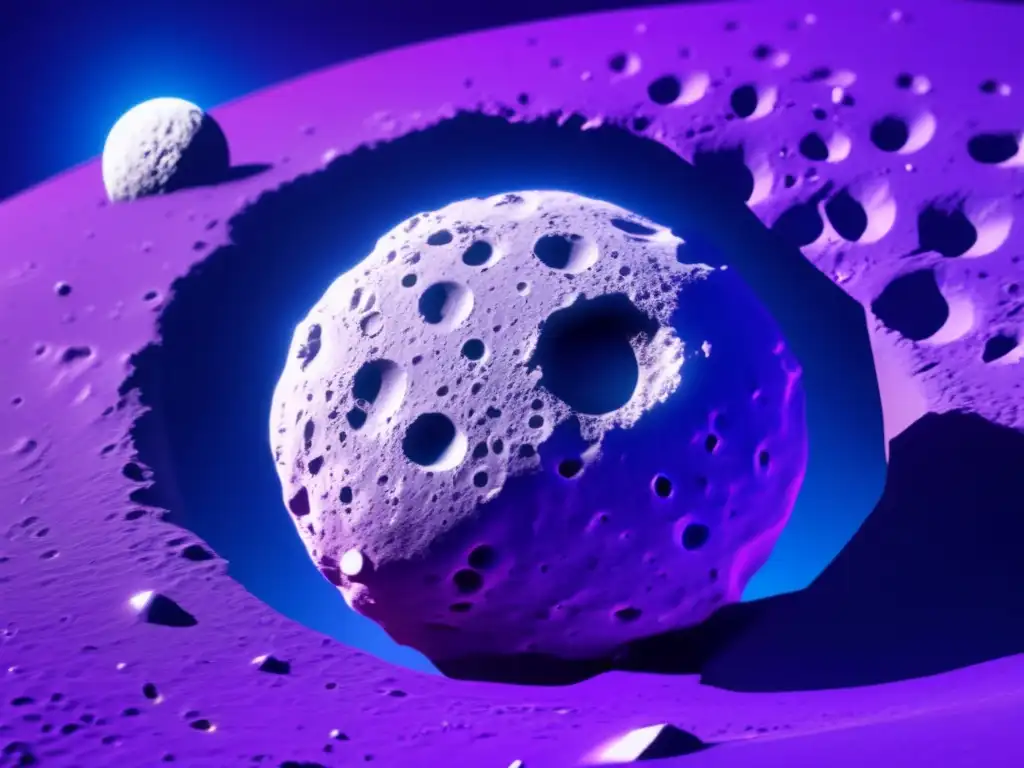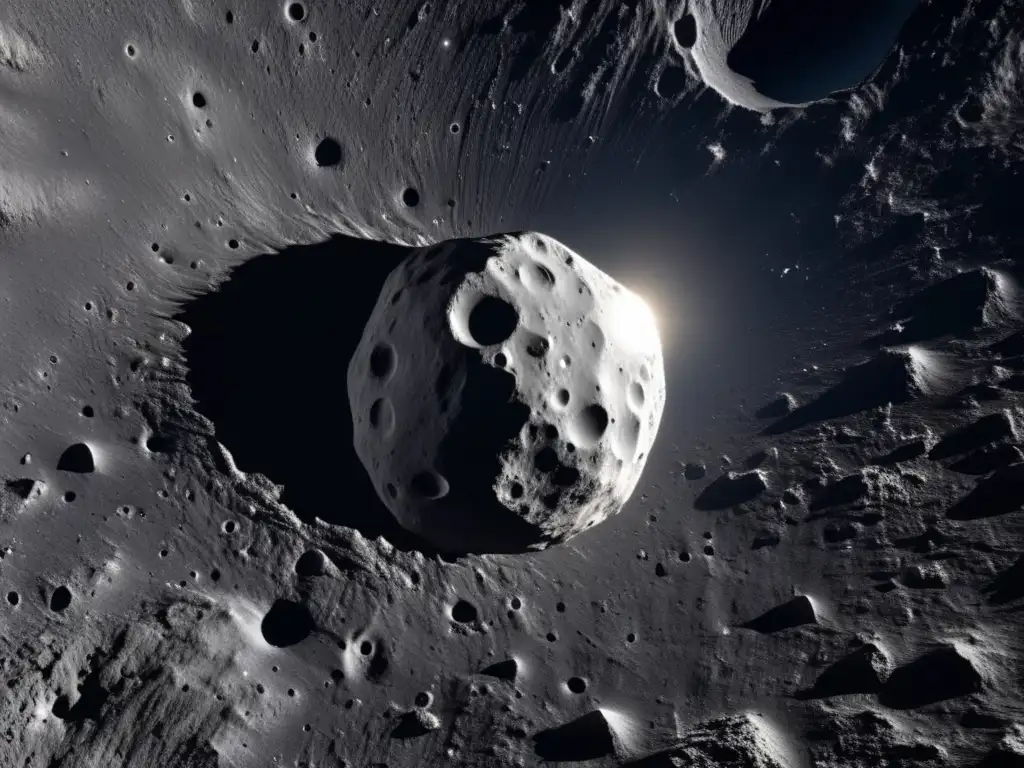The Scientific Relevance Of Asteroid Misenus

Introduction
Asteroids have long captured the fascination and curiosity of scientists and space enthusiasts alike. These celestial bodies, remnants from the early days of our solar system, offer valuable insights into the formation and evolution of our universe. One such asteroid with significant scientific relevance is Asteroid Misenus. In this article, we will explore the various aspects of this intriguing asteroid and its importance in the field of asteroid research.
The Discovery of Asteroid Misenus

Asteroid Misenus: A Brief Overview
Asteroid Misenus, also known as 52513 Misenus, was discovered on November 3, 2000, by Italian astronomers Andrea Boattini and Alan Gilmore. It belongs to a group of asteroids known as the Apollo asteroids, which have orbits that intersect with Earth's orbit. Misenus measures approximately 2 kilometers in diameter and has an orbital period of 1.9 years.
Physical Characteristics of Asteroid Misenus
Through spectroscopic analysis, scientists have determined that Asteroid Misenus has a composition similar to carbonaceous chondrites, a type of meteorite rich in carbon compounds. Its surface is likely covered in a layer of dark, carbon-rich material, giving it a low reflectivity. These physical characteristics provide valuable clues about the asteroid's origin and potential resources it may contain.
Orbital Dynamics and Potential Hazards
As an Apollo asteroid, Asteroid Misenus crosses Earth's orbit, making it potentially hazardous. However, detailed observations and precise calculations have allowed scientists to accurately predict its future trajectories and rule out any significant threat of collision with our planet in the foreseeable future.
The Scientific Significance of Asteroid Misenus

Insights into Solar System Formation
Studying asteroids like Misenus provides valuable insights into the formation and early evolution of our solar system. By analyzing their composition and structure, scientists can piece together the puzzle of how planets, moons, and other celestial bodies formed from the cosmic debris that existed billions of years ago. The carbonaceous nature of Misenus hints at its potential role in delivering organic materials and water to Earth during its early stages.
Potential for Resource Exploration
Asteroid mining has emerged as a promising avenue for resource exploration and could play a crucial role in supporting future space missions. The carbonaceous composition of Misenus suggests the presence of valuable resources such as water, metals, and organic compounds. Extracting these resources from asteroids could provide a sustainable source of raw materials for space-based activities, reducing reliance on Earth's limited resources.
Understanding Impact Events
Another aspect of scientific importance surrounding asteroids like Misenus is their potential for impact events. By studying their composition, structure, and orbits, scientists can gain a better understanding of the processes involved in asteroid impacts and their consequences. This knowledge is vital for developing strategies to mitigate potential threats from asteroids that may pose a danger to Earth.
Current and Future Exploration Missions

Observational Campaigns and Telescopic Studies
Astronomers and researchers continue to monitor Asteroid Misenus through telescopic observations to gather more data and refine our understanding of its characteristics. These studies contribute to our knowledge of its orbit, shape, and rotational properties. The ongoing collection of data helps scientists make accurate predictions about Misenus's future movements.
Future Sample Return Missions
With the advent of sample return missions, the potential for exploring asteroids like Misenus up close has become a reality. Future missions could involve spacecraft rendezvousing with Misenus, collecting samples from its surface, and returning them to Earth for detailed analysis. These missions would unlock unprecedented insights into the asteroid's composition, structure, and potential resources.
Frequently Asked Questions

-
What is the size of Asteroid Misenus?
Asteroid Misenus has an estimated diameter of approximately 2 kilometers.
-
Is Asteroid Misenus a potential threat to Earth?
No, detailed calculations have ruled out any significant threat of collision between Asteroid Misenus and Earth in the foreseeable future.
-
What is the composition of Asteroid Misenus?
Asteroid Misenus has a carbonaceous composition, similar to carbonaceous chondrite meteorites, which are rich in organic compounds and water.
-
Can Asteroid Misenus be mined for resources?
Yes, the carbonaceous nature of Asteroid Misenus suggests the presence of valuable resources such as water, metals, and organic compounds.
-
Are there any future missions planned for studying Asteroid Misenus?
While there are no specific missions planned for Misenus at present, future sample return missions to asteroids like Misenus are being considered to further our understanding of these celestial bodies.
Conclusion
Asteroid Misenus offers scientific insights that are invaluable in deepening our understanding of the solar system's formation, potential resource exploitation, and impact events. By studying its composition, structure, and orbital dynamics, scientists can unlock knowledge that is crucial for space exploration and safeguarding our planet. As we continue to explore the mysteries of asteroids like Misenus, our understanding of the universe expands. Join us in the exploration of asteroids by subscribing to www.asteroidrealm.com, sharing this article on social networks, and engaging in discussions to further expand our collective knowledge.
Additional Resources

For further reading on the scientific relevance of asteroids, including Asteroid Misenus, check out the following resources:
- "Asteroid Mining: Opportunities and Challenges" - Scientific Journal Article
- "Asteroid Impacts and Their Consequences" - Research Paper
- "Exploration of Carbonaceous Asteroids" - NASA Mission Report
 A Profile Of Quaoar: A Large Asteroid Beyond Neptune
A Profile Of Quaoar: A Large Asteroid Beyond Neptune 2008 TC3: The Asteroid With A Predicted Impact
2008 TC3: The Asteroid With A Predicted Impact Ida And Dactyl: A Profile Of An Asteroid And Its Moon
Ida And Dactyl: A Profile Of An Asteroid And Its MoonIf you want to discover more articles similar to The Scientific Relevance Of Asteroid Misenus, you can visit the Asteroid Profiles category.
Leave a Reply

Articulos relacionados: